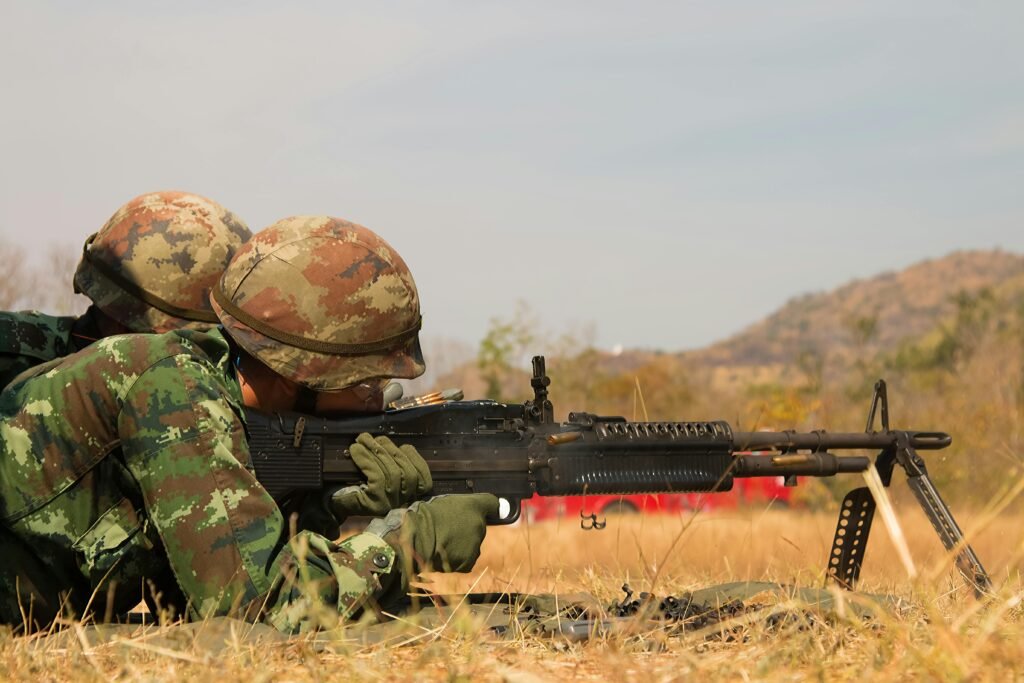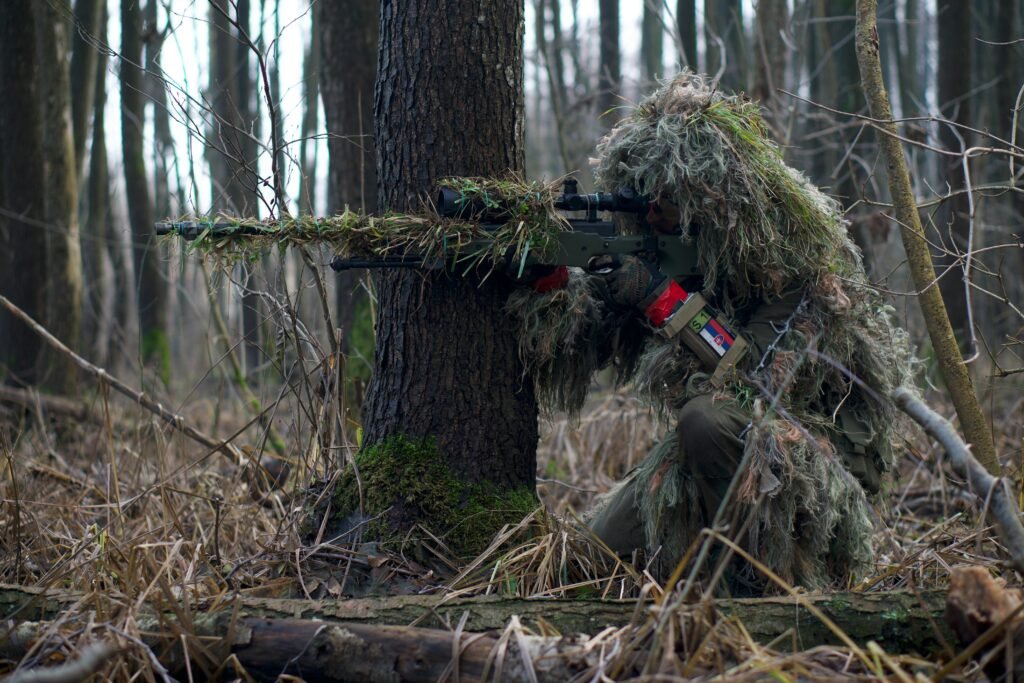In “The Ultimate Guide to Achieving Accuracy and Precision in Shooting,” you’ll discover a plethora of tips that can take your shooting skills to the next level. Whether you’re a beginner or an experienced shooter, this guide is filled with valuable insights on how to improve your accuracy and precision. From mastering proper posture and grip to understanding the importance of breath control, each tip is designed to help you enhance your shooting abilities and hit your target with unmatched precision. Get ready to elevate your skills and become a more accurate and precise shooter than ever before.
The Ultimate Guide to Achieving Accuracy and Precision in Shooting
Whether you are a seasoned marksman or just starting out, achieving accuracy and precision in shooting requires a combination of skill, knowledge, and practice. In this comprehensive guide, we will explore various aspects of shooting, from choosing the right firearm to mastering trigger control, in order to help you enhance your shooting abilities. So let’s dive in and unlock the secrets to becoming a highly accurate and precise shooter.

This image is property of images.pexels.com.
1. Choosing the Right Firearm
Consider the Purpose
Before selecting a firearm, it is essential to consider its intended purpose. Are you planning to use it for self-defense, hunting, or competitive shooting? Each of these purposes may require different features and specifications in a firearm. Understanding your specific needs will help you make a well-informed decision.
Select the Appropriate Caliber
Choosing the right caliber for your firearm is crucial. The caliber refers to the diameter of the projectile, which can impact trajectory, recoil, and effectiveness. Factors such as intended use, target size, and personal preference play a significant role in selecting the appropriate caliber. It is important to research and seek advice from experts to find the optimum caliber for your shooting needs.
Choose the Right Action Type
Firearms come in various action types, including bolt-action, semi-automatic, and revolver. Each action type has its own advantages and disadvantages. Bolt-action rifles are known for their reliability and accuracy, while semi-automatic firearms offer faster follow-up shots. Revolvers provide simplicity and a wide range of caliber options. Consider factors such as ease of use, reliability, and personal preference when selecting the right action type for your shooting activities.
2. Proper Firearm Handling
Master Basic Firearm Safety Rules
The foundation of safe shooting begins with mastering the basic firearm safety rules. Always treat every firearm as if it is loaded, and never point it at anything you are not willing to destroy. Keep your finger off the trigger until you are ready to shoot, and be aware of your target and what is beyond it. Adhering to these safety rules at all times will not only protect yourself and others but also contribute to a responsible shooting culture.
Practice Proper Grip
Having a proper grip on your firearm is essential to control recoil and maintain stability while shooting. Your strong hand should fully grip the firearm, while your support hand should provide balance and assist with recoil management. Experiment with grip techniques and find the one that allows you to maintain control and comfort during shooting sessions. Regular practice and muscle memory will help you develop a consistent and effective grip.
Learn Correct Trigger Control
Trigger control is a critical aspect of shooting accuracy. Proper trigger control involves applying steady and even pressure to the trigger without disturbing your aim. Avoid slapping or jerking the trigger, as it can cause the muzzle to move and disrupt your shot placement. Practice dry firing exercises to develop a smooth trigger pull and improve your shooting precision.

This image is property of images.pexels.com.
3. Understanding Your Optics
Selecting the Right Scope
Optics play a crucial role in shooting accuracy, especially for long-range shots. When selecting a scope, consider factors such as magnification, objective lens size, and reticle type. Higher magnification allows for better target identification, while a larger objective lens improves light transmission. Reticles with clear markings and adjustable brightness enhance aiming and target acquisition. Take your time to research and choose a scope that suits your shooting needs and preferences.
Adjusting for Eye Relief
Eye relief refers to the distance between your eye and the scope’s eyepiece. It is essential to adjust the eye relief to a comfortable position that allows for a clear and full field of view. Improper eye relief can lead to eye strain and hinder your shooting accuracy. Follow the manufacturer’s instructions and experiment with different eye relief settings to find the optimal position for your shooting style.
Learning to Use Reticles
Reticles, also known as crosshairs, are a fundamental component of scopes and help you align your aim. Different types of reticles offer varying levels of precision and functionality. While the classic duplex reticle is widely used, other options such as mil-dot reticles provide additional reference points for adjusting for bullet drop and windage. Familiarize yourself with the reticle’s markings and learn how to use them effectively to compensate for various shooting conditions.
4. Developing a Consistent Shooting Stance
Importance of a Stable Shooting Platform
Having a stable shooting platform is vital for accurate and precise shooting. A stable platform minimizes unwanted movement and allows you to maintain focus on your target. Stability can be achieved through a combination of proper body positioning, grip, and foot placement. A solid shooting platform provides a foundation for consistent and repeatable shots.
Achieving a Proper Stance
To achieve a proper shooting stance, stand with your feet shoulder-width apart, perpendicular to the target. Distribute your weight evenly between both feet, keeping your knees slightly bent. Lean slightly forward from your waist, maintaining a straight and relaxed upper body. This stance provides balance, stability, and flexibility, allowing you to absorb recoil and maintain control during shooting.
Proper Foot Placement
Foot placement plays a significant role in maintaining balance and stability while shooting. Position your dominant foot slightly back and in a staggered stance. This allows for better weight distribution and reduces the chance of being knocked off balance. Experiment with foot placement to find the position that offers you the most stability and comfort based on your body geometry and shooting style.

This image is property of images.pexels.com.
5. Enhancing Shooting Fundamentals
Breathing Control
Controlling your breathing during shooting is crucial for minimizing movement and maintaining precision. Take a deep breath and let it out slowly before settling into your shooting position. Hold your breath for a moment while aligning your sights and squeezing the trigger. This technique will help you achieve a steadier aim and improve your shot placement.
Trigger Squeeze
Mastering the art of trigger squeeze is essential to minimize any disturbance to your sight picture. Apply steady and even pressure on the trigger, using only your index finger. Gradually increase the pressure until the trigger breaks, allowing the firearm to discharge. Avoid anticipating the shot and jerking the trigger, as it can negatively impact accuracy. Focus on maintaining a smooth, controlled trigger squeeze for consistent results.
Follow-Through Techniques
Follow-through is the act of maintaining your shooting position and focus after the shot has been fired. This allows you to observe the bullet’s impact and make any necessary adjustments for subsequent shots. Avoid flinching or immediately moving the firearm after the shot breaks. Maintain your grip, sight alignment, and stance until you are confident that the shot has reached its intended target.
6. Practicing Sight Alignment and Sight Picture
Focusing on Front Sight
Front sight focus is a fundamental concept in shooting accuracy. Instead of focusing on the target, divert your attention to the front sight post or dot. Keeping the front sight crisp and clear allows for better alignment and precise shot placement. Train your eyes to prioritize the visibility of the front sight, while maintaining awareness of the target and rear sight.
Understanding Perfect Sight Alignment
Achieving perfect sight alignment means ensuring that the front sight is centered and level within the rear sight aperture or notch. The top of the front sight should align horizontally with the top of the rear sight. Consistent sight alignment is vital for accurate shooting. Regular practice and repetitions will help you develop muscle memory and quickly achieve perfect sight alignment.
Aiming at the Bullseye
Aiming refers to the act of aligning your sights with the desired point of impact on the target. While it may seem intuitive, proper aiming requires concentration and consistency. Focus on placing the front sight precisely on the target, allowing for the necessary adjustments due to distance and environmental factors. Training your eyes to align the sights accurately with the intended point of impact will significantly enhance your overall shooting accuracy.
7. Mastering Trigger Control
Understanding Stages of Trigger Pull
Trigger pull consists of three stages: pre-travel, the point of resistance, and the break. Pre-travel is the movement of the trigger before encountering resistance. The point of resistance is where you begin to feel increased pressure. The break occurs when the trigger sear releases and allows the firing pin to strike the primer. Understanding each stage and practicing to find the break point will enhance your control over trigger pull and improve shot placement consistency.
Prepping the Trigger
Prepping the trigger is a technique used to minimize trigger movement before the shot is fired. Apply slight pressure on the trigger until you encounter the point of resistance (or the wall). This technique reduces any potential disturbance caused by abrupt trigger pull and allows for a more controlled break. Experiment with different amounts of pre-travel pressure to find the sweet spot that suits your shooting style.
Maintaining Steady Pressure
Once you have prepped the trigger, maintain steady and consistent pressure until the trigger breaks. Avoid jerking or increasing pressure abruptly, as it can negatively impact your shot placement. Focus on maintaining a smooth and fluid trigger pull, ensuring that the firearm discharges without disturbing your aim. Regular practice and repetition will help you develop fine motor skills and achieve greater trigger control.
8. Applying Proper Mental Focus
Developing Concentration
Maintaining proper mental focus is essential for achieving accuracy and precision in shooting. Eliminate distractions and focus solely on the task at hand. Clear your mind and develop mental discipline to remain focused throughout the shooting process. Concentrating on the fundamentals and the desired outcome will enhance your ability to execute precise shots consistently.
Visualizing Success
Visualization is a powerful technique that can improve shooting performance. Before each shot, visualize the entire shooting process, from sight alignment to trigger control, and see yourself hitting the target with pinpoint accuracy. By visualizing success, you condition your mind and body for optimal performance, increasing the likelihood of achieving your desired results.
Overcoming Distractions
Shooting environments can be filled with distractions, such as noise, movement, or adverse weather conditions. Learning to overcome these distractions is crucial for maintaining accuracy and precision. By acknowledging and accepting distractions, you can develop techniques to manage them effectively. Practice shooting in various conditions and intentionally introduce distractions to build resilience and improve your ability to remain focused.
9. Utilizing Shooting Drills for Skill Improvement
Dry Fire Exercises
Dry firing is a cost-effective and accessible training method to improve shooting skills. Practice your shooting fundamentals, including sight alignment, trigger control, and breathing, without live ammunition. Focus on the quality of your technique and ingraining correct muscle memory. Incorporate dry fire exercises into your regular training routine to reinforce proper shooting mechanics.
Shot Grouping Practice
Shot grouping exercises allow you to assess your shooting accuracy and consistency. Choose a target and fire a series of shots at a specific distance, focusing on minimizing group size and placing shots close together. Analyze the grouping to identify any patterns or deviations, and make necessary adjustments to improve your accuracy. Regular shot grouping practice enables you to measure your progress and fine-tune your shooting skills.
Speed and Accuracy Drills
Speed and accuracy drills are designed to enhance your shooting speed while maintaining precision. Set time limits and challenge yourself to complete a series of accurate shots within the specified time frame. As you improve, gradually reduce the time allowed, pushing your speed while ensuring shot placement remains accurate. Speed and accuracy drills help develop effective shooting techniques under demanding conditions.
10. Considering External Factors
Accounting for Wind
Wind is a significant external factor that affects bullet trajectory and accuracy. Learn to read wind indicators and make the necessary adjustments to compensate for its effects. Understanding wind direction, speed, and its influence on the bullet’s flight path will greatly improve your shooting accuracy, particularly during long-range shooting.
Adjusting for Elevation
Elevation adjustments are crucial when shooting at different distances. Learn how to compensate for bullet drop by adjusting your sights, scope turrets, or holdover. Understanding the ballistics of your ammunition and the trajectory of your bullet will allow you to make precise elevation adjustments, ensuring accurate shots at varying distances.
Managing Recoil
Recoil management is essential for maintaining control and accuracy, especially when shooting powerful firearms. Proper body positioning, grip, and stance play a significant role in managing recoil effectively. Lean slightly forward and allow your body to absorb and counteract the recoil force. Regular practice and gradual exposure to heavier recoiling firearms will help you develop the necessary techniques to manage recoil and maintain accuracy.
In conclusion, achieving accuracy and precision in shooting requires a combination of knowledge, skill, and practice. By choosing the right firearm, mastering firearm handling techniques, understanding optics, developing a consistent shooting stance, enhancing shooting fundamentals, practicing sight alignment, mastering trigger control, maintaining proper mental focus, utilizing shooting drills for skill improvement, and considering external factors, you can significantly enhance your shooting abilities. Remember, accuracy and precision are attainable goals for every shooter, and with dedication and perseverance, you can become a highly accurate and precise marksman. So, continue to learn, practice, and refine your skills, and watch your shooting abilities soar to new heights. Happy shooting!
